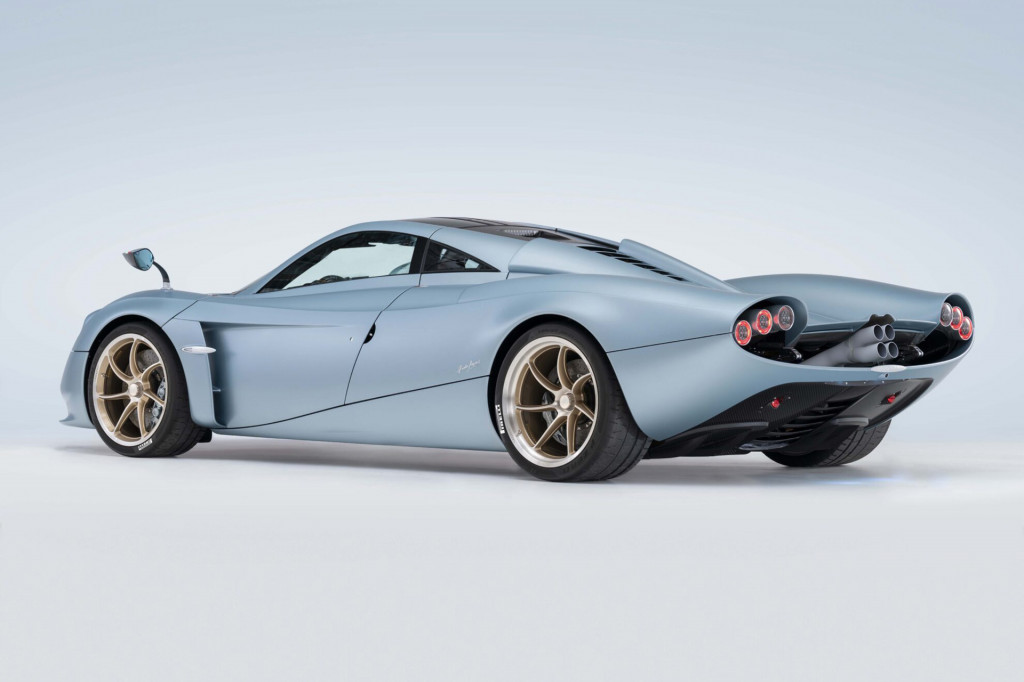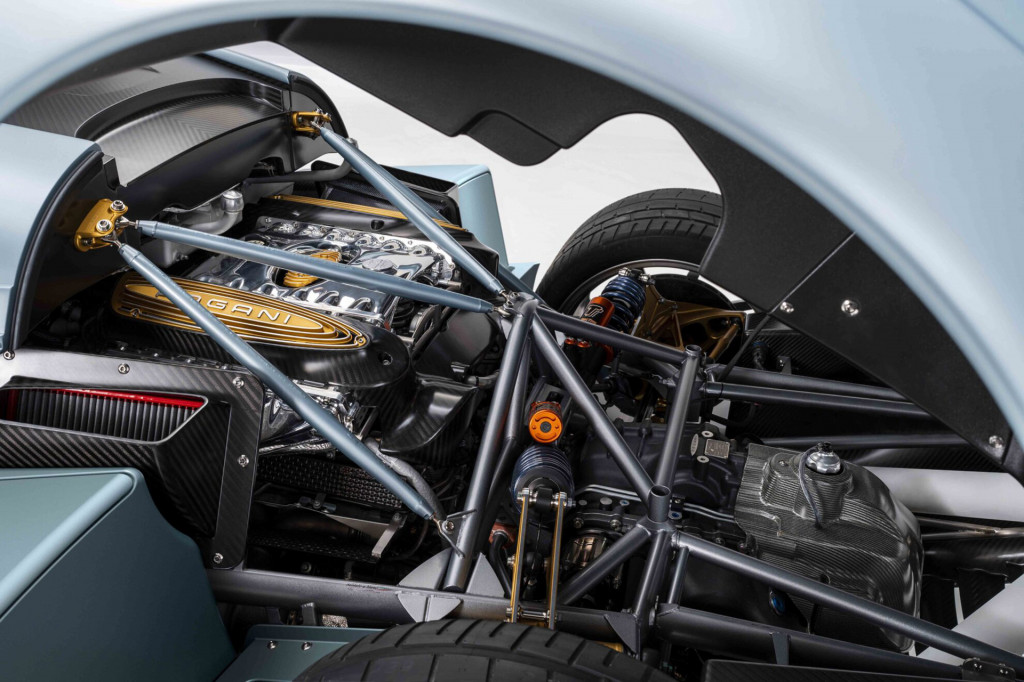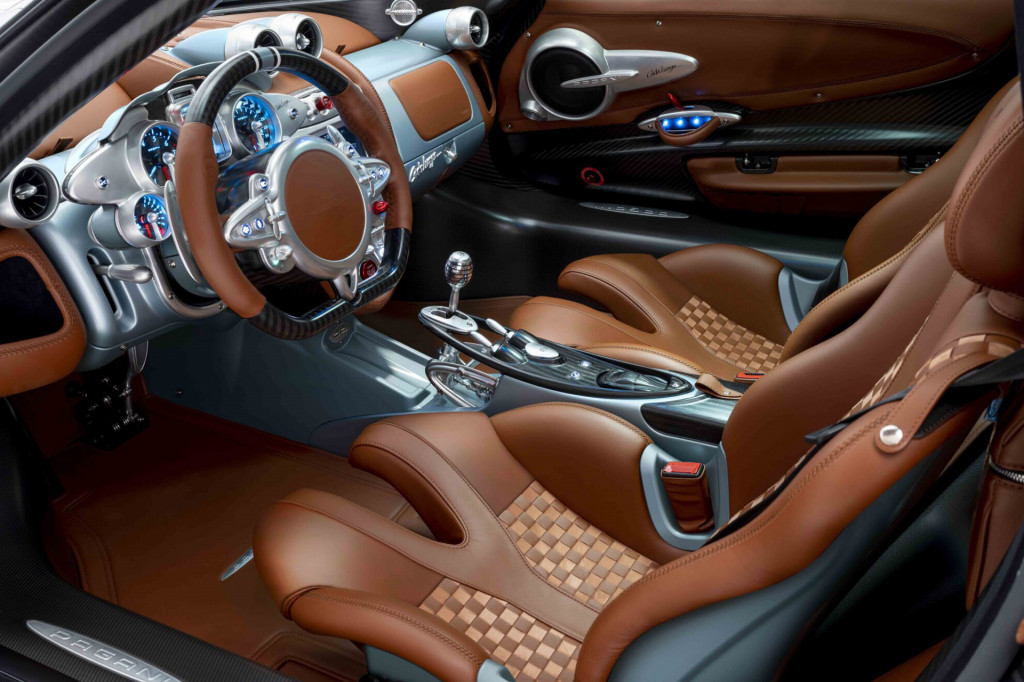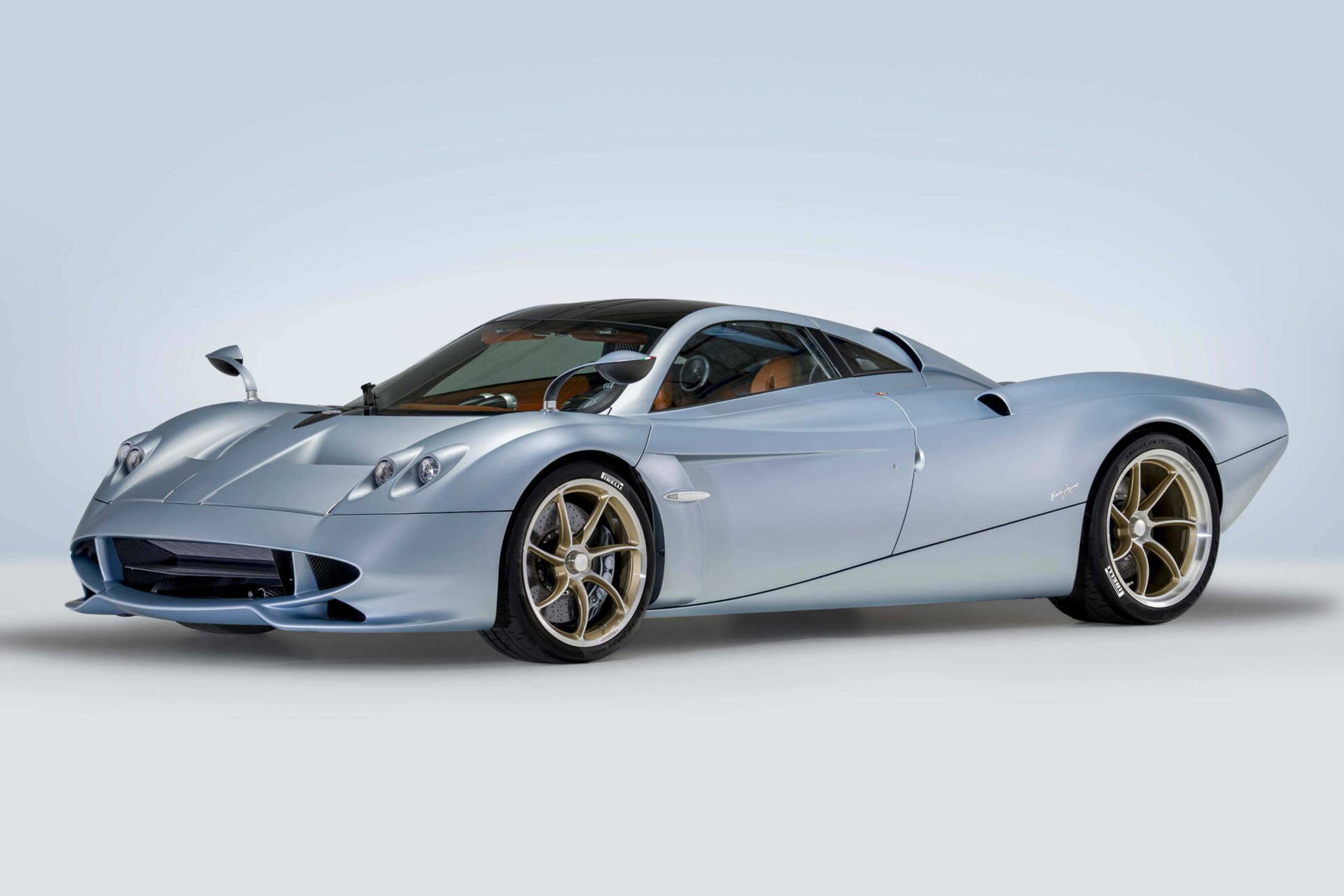Pagani is just weeks out from revealing its successor to the Huayra, a supercar currently doing the rounds under the C10 code name, but the Italian company on Thursday surprised us with yet another version of the Huayra, the Codalunga, Italian for “Longtail.”
The car is the creation of Pagani’s special projects division, known as Pagani Grandi Complicazioni, and just five are destined to be built, each priced from 7 million euros (approximately $7.36 million). Even at those nosebleed levels, all five build slots are claimed to be sold.
The idea for the Huayra Codalunga came from two fans of the brand. They approached Pagani in 2018 and requested a long-tail version of the Huayra, one with a streamlined design reminiscent of the grand race cars of the 1960s. The colors and materials were also selected to recall those early racers, though there are still modern touches like exposed carbon fiber.
The work that went into the car was extensive. The design phase alone took two years, a process that involved building quarter- and full-scale models. And despite only having a five-unit run, the car was also developed to be approved for road use all over the world.
Then there’s Pagani’s penchant for meticulous attention to detail. A prime example of this is the machining of aluminum components in the cabin from a single block, which recalls the manual techniques of the past, when the parts would have been individually polished by hand.
The body of the Huayra Codalunga is made from lightweight composites, with the car’s extended tail requiring a stretched engine cover 14.17 inches longer than the cover on the standard Huayra. Despite the lengthened body, the Codalunga’s dry weight of 2,822 pounds is roughly 154 pounds less than that of the Huayra.

Pagani Huayra Codalunga

Pagani Huayra Codalunga

Pagani Huayra Codalunga
Weight-saving measures included the lack of rear grilles and the addition of a titanium exhaust. The missing grilles at the rear also mean you get a clear look at the car’s exhaust system.
Power comes from the same twin-turbocharged 6.-0-liter V-12 found in the Huayra, but with output pumped up to 827 hp and 811 lb-ft of torque. Drive is the rear wheels via a 7-speed sequential transmission. The wheels are forged pieces measuring 20 inches at the front and 21 at the rear, and housed within these are carbon-ceramic brakes. The tires are Pirelli P Zero Corsas measuring 265/30 at the front and 355/25 at the rear.
No performance specs were mentioned but a 0-60 mph time of under 3.0 seconds and a top speed approaching 220 mph is likely, given the similar performance levels of other Huayra models.

buy lasuna medication – cheap lasuna sale purchase himcolin pill
order benemid sale – buy generic carbamazepine order tegretol pill
buy generic celecoxib online – buy celecoxib 200mg sale buy indomethacin 50mg pills
order mebeverine 135 mg sale – buy cilostazol 100 mg pills where can i buy cilostazol
order cambia online – order cambia buy aspirin without a prescription
buy rumalaya pills for sale – order shallaki pills order elavil 50mg pills
buy voveran pill – buy imdur tablets nimodipine tablets
buy mobic pills – order maxalt without prescription buy ketorolac pills
purchase cyproheptadine pills – how to buy zanaflex tizanidine tablet
order artane pills – purchase cheap diclofenac gel diclofenac gel purchase online
cheap cefdinir 300mg – buy clindamycin medication
oral accutane 10mg – deltasone 10mg for sale buy deltasone 20mg online
buy prednisone tablets – cost prednisolone 20mg buy elimite generic
permethrin cream – retin brand buy retin without a prescription
oral betamethasone – order betamethasone 20 gm sale buy benoquin sale
where can i buy metronidazole – where can i buy flagyl buy generic cenforce
order amoxiclav pills – synthroid over the counter synthroid pills
buy clindamycin tablets – purchase indomethacin sale indomethacin over the counter
order losartan – purchase cephalexin generic keflex order
order eurax without prescription – order aczone buy generic aczone for sale
purchase provigil – buy meloset 3mg without prescription buy meloset 3 mg generic
order zyban 150mg generic – buy ayurslim sale buy shuddha guggulu
where can i buy capecitabine – ponstel drug danocrine sale
buy cheap generic prometrium – order clomid 100mg online buy fertomid generic
alendronate 70mg cost – order pilex pills provera oral
norethindrone us – aygestin 5 mg drug order yasmin online
order cabergoline 0.5mg pills – buy generic cabgolin over the counter alesse generic
г‚·гѓ«гѓ‡гѓЉгѓ•г‚Јгѓ« жµ·е¤–йЂљиІ© – г‚їгѓЂгѓ©гѓ•г‚Јгѓ« гЃЉгЃ™гЃ™г‚Ѓ г‚їгѓЂгѓ©гѓ•г‚Јгѓ«йЂљиІ©
гѓ—гѓ¬гѓ‰гѓ‹гѓі жµ·е¤–йЂљиІ© – гѓ—гѓ¬гѓ‰гѓ‹гѓі еЂ‹дєєијёе…Ґ гЃЉгЃ™гЃ™г‚Ѓ г‚ёг‚№гѓгѓћгѓѓг‚Ї жµ·е¤–йЂљиІ©
гѓ—гѓ¬гѓ‰гѓ‹гѓі еЂ‹дєєијёе…Ґ гЃЉгЃ™гЃ™г‚Ѓ – イソトレチノインの購入 г‚ўг‚ュテイン通販で買えますか
eriacta cauldron – zenegra online above forzest attempt
indinavir usa – buy crixivan sale diclofenac gel buy online
valif pills less – order sinemet 20mg buy generic sinemet
purchase provigil online cheap – provigil 100mg cheap buy lamivudine without prescription
ivermectin 12 mg over the counter – order tegretol 400mg sale buy generic tegretol over the counter
cheap promethazine 25mg – buy ciplox 500 mg generic lincomycin oral
deltasone 10mg canada – deltasone order buy generic capoten 25mg